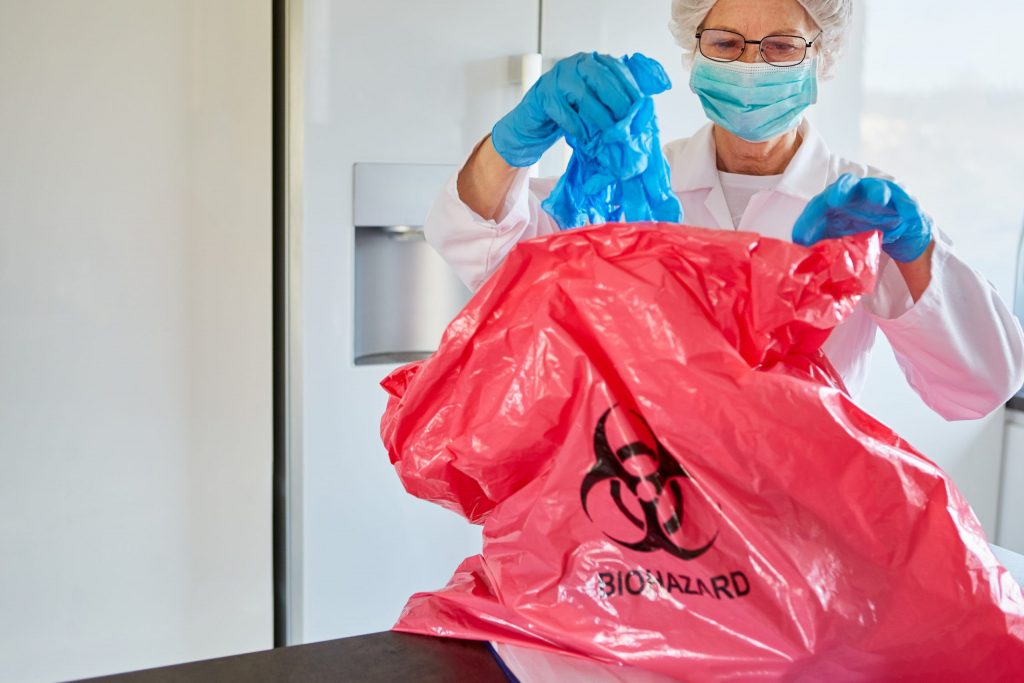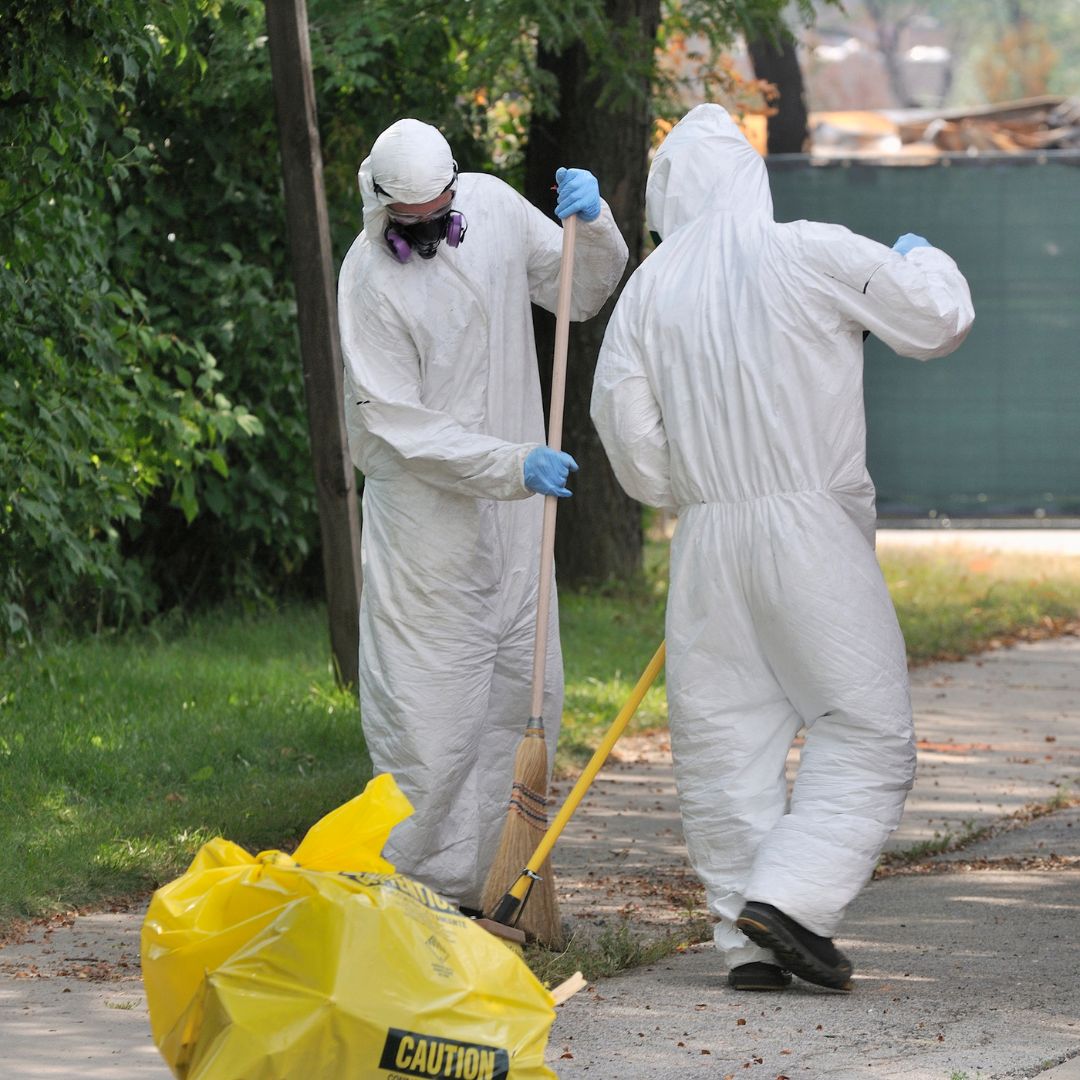Accurate ATP Testing for Effective Sanitation and Hygiene Tracking
Accurate ATP Testing for Effective Sanitation and Hygiene Tracking
Blog Article
Specialist Biohazard Cleansing and Decontamination for Blood, Bodily Fluids, and Hazardous Products
In the realm of biohazard cleaning and decontamination for blood, bodily liquids, and unsafe products, precision and competence are vital. The potential health dangers associated with direct exposure to biohazards emphasize the vital need for meticulous handling and thorough cleaning. Specialized training gears up professionals with the expertise and abilities needed to deal with these unsafe circumstances efficiently. Nonetheless, it is not simply about cleansing up; the significance of using correct decontamination strategies can not be overstated. As we browse the complex landscape of biohazard cleanup, comprehending the nuances of guidelines, compliance, and the customized devices at play comes to be crucial in guaranteeing a secure and extensive purification process.
Health Dangers of Biohazard Direct Exposure
Direct exposure to biohazards postures significant health risks that can lead to extreme effects for people and communities alike. Biohazards encompass a variety of organic materials, consisting of blood, physical liquids, mold and mildew, germs, infections, and various other possibly contagious products. When people enter into call with these biohazards, whether via crashes, improper handling, or ecological direct exposure, they encounter the threat of having severe ailments or diseases.
One of the key wellness threats related to biohazard direct exposure is the transmission of contagious diseases. Bloodborne microorganisms such as HIV, liver disease B and C, and various germs can be present in biohazardous materials, posturing a straight danger to human health and wellness. Inhaling airborne biohazards like mold spores or entering into call with polluted surfaces can additionally bring about respiratory system problems, allergies, and other damaging health and wellness results.
Furthermore, biohazard direct exposure can have long-term health effects, with some illness showing up years after the first get in touch with (Blood Cleanup). For that reason, it is crucial to focus on appropriate biohazard cleaning and purification to reduce these wellness dangers and ensure the safety and security of individuals and communities

Specialized Training for Biohazard Clean-up
When it comes to taking care of biohazard cleanup efficiently and securely, specialized training plays a fundamental role in guaranteeing correct decontamination treatments are adhered to. Biohazard cleanup calls for specific knowledge and abilities to effectively minimize threats connected with bloodborne pathogens, physical fluids, and harmful products. Experts educated in biohazard cleaning go through strenuous instruction on how to securely handle, eliminate, and dispose of biohazardous materials to protect against contamination and exposure.
Specialized training for biohazard clean-up covers a series of important topics, including correct personal protective equipment (PPE) usage, bloodborne pathogen recognition, purification methods, and dangerous waste disposal protocols. People trained in biohazard cleaning are outfitted with the necessary proficiency to evaluate contamination levels, identify possible dangers, and apply appropriate cleaning treatments in conformity with regulative standards.
Continual training and education and learning are extremely important in the field of biohazard clean-up to remain updated on the most recent purification technologies, safety and security protocols, and policies. By purchasing specialized training, biohazard cleaning experts can successfully react to emergency situation cleaning circumstances and secure both public health and wellness and the setting.
Relevance of Proper Decontamination Methods
Utilizing appropriate purification techniques is important in biohazard clean-up to properly minimize and eliminate harmful products wellness threats. Reliable decontamination not only guarantees the elimination of noticeable traces of blood, physical liquids, and various other biohazards however additionally targets invisible pathogens that might present major health threats otherwise correctly gotten rid of. By following stringent decontamination methods, trained specialists can significantly lower the danger of direct exposure to harmful microorganisms, infections, and germs that might lead to infections or illness.
Correct decontamination methods involve the usage of specialized tools and anti-bacterials that are particularly created to neutralize biohazards efficiently. Detailed cleaning and disinfection of contaminated locations are vital to protect against the spread of virus and make certain a safe atmosphere for occupants. Additionally, the appropriate disposal of biohazardous waste adhering to purification procedures is vital in avoiding contamination of various other surface areas or people.

Equipment and Tools for Safe Cleaning
When dealing with blood, physical liquids, or hazardous products, biohazard cleaning professionals depend on specialized gear to reduce exposure threats and thoroughly decontaminate the affected area. Additionally, biohazard cleaning sets having anti-bacterials, absorbing materials, and biohazard bags are used to securely get rid of and have of contaminated things.
Advanced cleansing devices like hospital-grade disinfectants, HEPA-filtered vacuums, and fogging makers are used to disinfect surfaces and get rid of biohazards successfully. Specialized equipment such as sharps containers and biohazard garbage disposal bins are utilized to securely manage sharp items and biohazardous waste products. By utilizing the best tools and devices, biohazard cleaning specialists can make sure a detailed clean-up process that prioritizes safety and minimizes health threats for both employees and owners of the damaged room.
Laws and Compliance in Biohazard Cleansing
Proper adherence to laws and compliance requirements is extremely important in biohazard cleaning to make sure the security of both workers and the atmosphere. Government firms such as OSHA (Occupational Security and Wellness Management) and the EPA (Epa) have actually developed certain guidelines for biohazard cleaning procedures to decrease health risks and ecological contamination. These regulations cover a series of elements including the handling, transportation, and disposal of biohazardous materials, as well as the needed training and safety equipment required for employees included in the cleanup process.
Biohazard cleaning firms have to stay current with these laws to guarantee that their operations meet the required security requirements. Failing to comply with these guidelines can result in serious consequences, find this consisting of penalties, lawful action, and threatening the health of individuals and the environment. By following strict laws and compliance steps, biohazard cleaning firms can properly reduce dangers and ensure a thorough and secure clean-up process for all events entailed.
Conclusion
In final thought, biohazard cleansing and decontamination require specific training, proper strategies, and adherence to guidelines. Exposure to blood, physical liquids, and dangerous products presents significant health and wellness risks, making it important to make use of the appropriate equipment and tools for risk-free clean-up. By following stringent protocols and guidelines, professionals can effectively minimize the dangers related to biohazard direct exposure and ensure the safety and security of both themselves and others.
As we navigate the complex landscape of biohazard cleaning, recognizing the nuances of regulations, compliance, and the specialized devices at play becomes important in making certain a extensive and secure purification procedure. (Blood Cleanup)
When it comes to handling biohazard cleanup successfully look what i found and securely, specialized training plays a basic function in making certain appropriate decontamination procedures are adhered to.Using proper decontamination techniques is critical in biohazard cleaning to efficiently remove unsafe products and decrease health threats. Furthermore, biohazard cleansing sets consisting of disinfectants, absorbing materials, and biohazard bags are made use of to securely have and get rid of of contaminated items.
Federal government agencies such as OSHA (Occupational Security and Wellness Management) and the EPA (Environmental Security Agency) have established particular guidelines for click here to find out more biohazard clean-up treatments to decrease wellness threats and ecological contamination.
Report this page